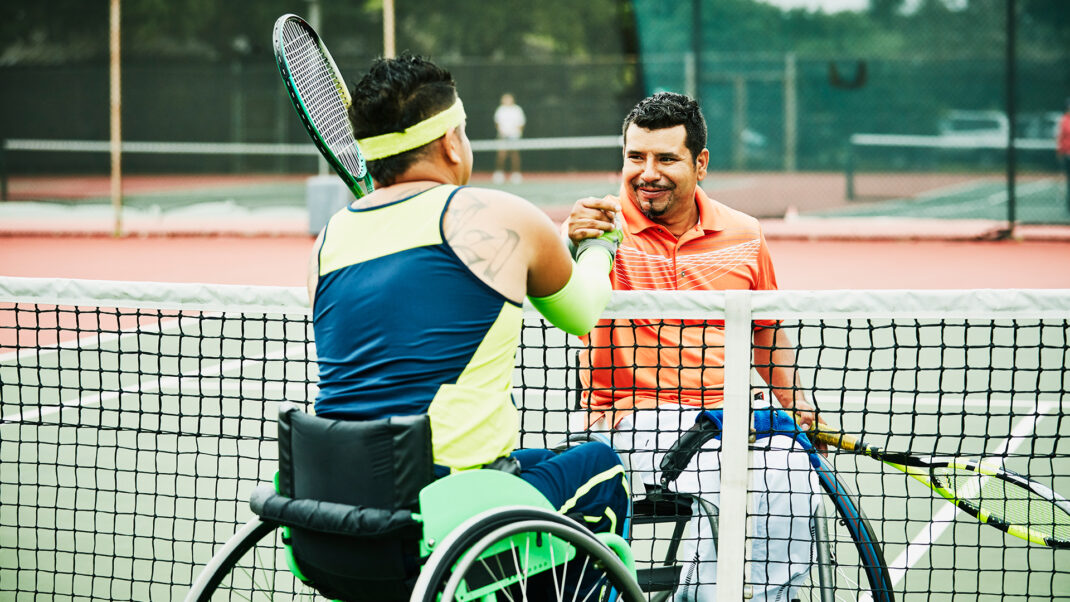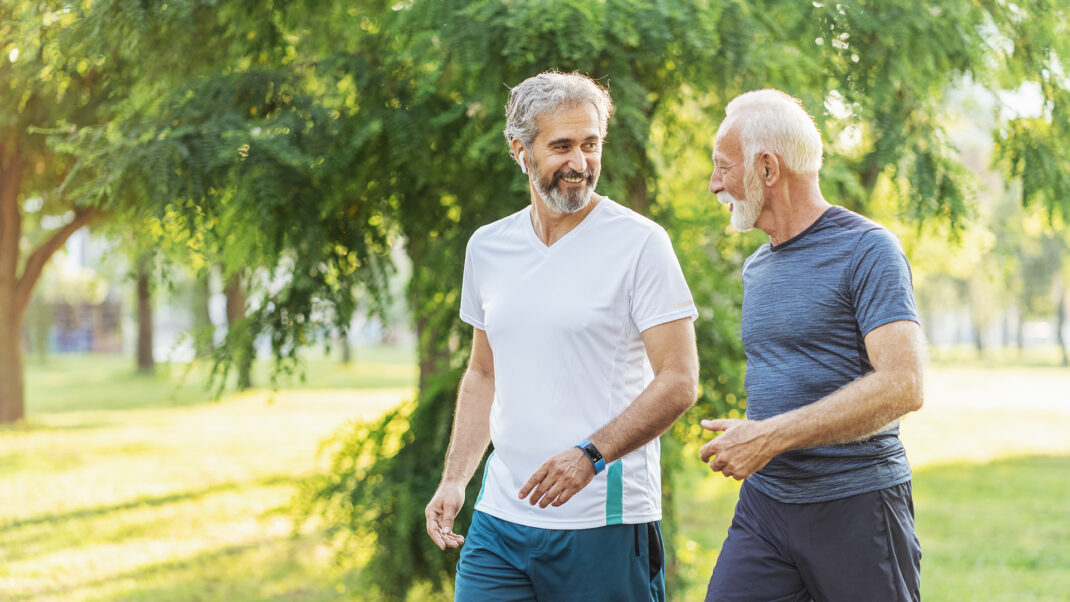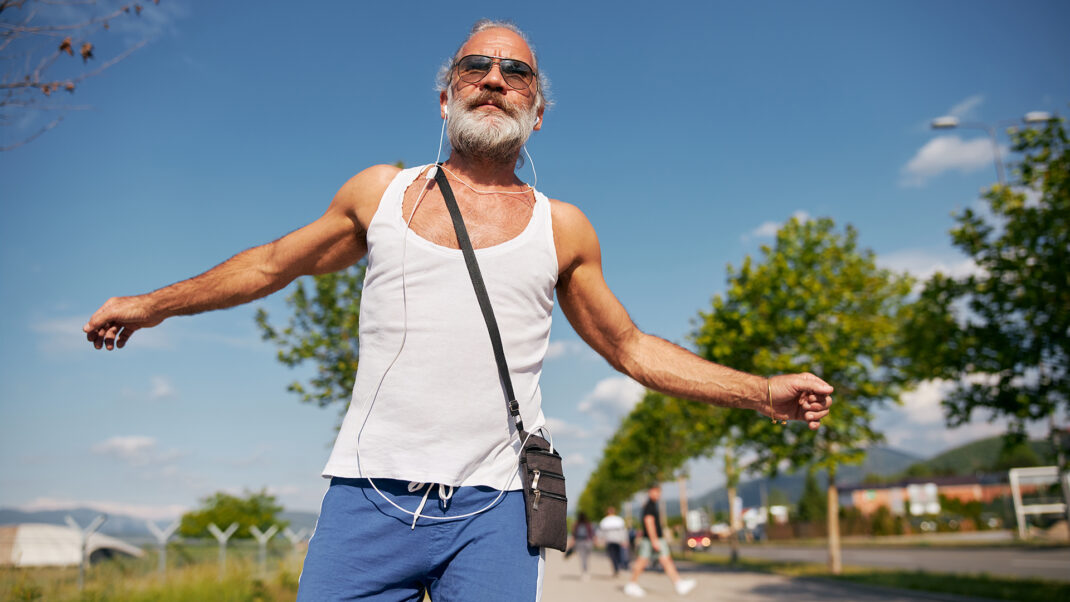A Chip off the Old Block
Want to help kids get fit? Get their grandparents in on the act!
What could a newborn have in common with a 21-year-old, a 45-year-old, a 68-year-old and even a 92-year-old? They’re all different generations of the same family.
At the turn of the 20th century, when people had a shorter lifespan, these family members may never have come to know each other. But today, according to the Centers for Disease Control and Prevention, the average length of life is at an all-time high. Males born in 2002 can expect to live to 74.7 years, and women born the same year can look forward to living to 79.9 years, up from 74.4 and 79.8, respectively, from 2001 (Child Trends DataBank 2004).
Yet even as longevity rates rise, a report from the Fabian Society in Britain suggests that children’s poor eating habits could result in them living shorter lives than their parents (Stoate 2002). Is the trend toward longer life now in jeopardy? Considering the rise in childhood obesity and the waves of early chronic conditions, such as diabetes and osteoporosis, that argument could certainly be made. But does the future have to be that bleak?
The solution to this looming health crisis may well lie with those who are experiencing longer lives—the grandparents. According to a survey conducted for The American Association of Retired Persons (AARP), grandparents reported sharing a number of roles with parents in children’s lives, including teaching children values, entertaining them and listening to their problems. (See “The Ties That Bind” on page 3.) Research from Georgia State and Duke Universities supports these findings, showing that grandparents are more involved in their children’s lives than ever before (Chu 2004). Part of this shift is probably due to the fact that today’s older Americans are spending about 20 years longer than the previous generation in the grandparent role—and they take that role seriously.
Grandchildren bring love, laughter, youthfulness, energy and purpose to the lives of their grandparents. At the same time, grandparents provide maturity, knowledge, stability and unconditional love in the lives of their grandchildren. In many cases grandparents also represent the keepers of family history and values, making them potential role models for the younger generation.
If you don’t currently offer intergenerational programming at your facility, you may want to begin incorporating it. If you already have classes that include generational crossover, the following tips may give you some ideas for livening up your offerings or adding to them.
A number of different offerings can get grandparents and their grandchildren coming into your facility specifically for the exercise.
The Bone Bank. Create a strength training program with the goal of
increasing bone density, strength and balance in both older adults and their grandchildren. You may want to use the President’s Challenge to keep participants motivated. (See Resources on page 4.)
Some people worry about whether children should do strength training. But according to the American Academy of Pediatrics, weight training contributes to improvements in overall fitness and bone density in kids as young as 6 years old, with no undue safety risks in properly supervised training programs (Faigenbaum et al. 1999). An article published last year in The Physician and Sportsmedicine recommends that youth strength training programs should have well-trained, attentive instructors who have experience working with children, are trained in safety procedures and use equipment geared specifically for kids (Benjamin, Glow & Mees 2003).
What about the benefits of a strength training program for grandparents? A nationwide survey published in Morbidity and Mortality Weekly Report showed that only about 11% of people ages 65 and older regularly perform any sort of strength training (Kruger et al. 2004). That’s far short of the 30% of older adults public health officials would like to see strength training twice weekly by the year 2010. This program gives you the opportunity to impact the health and lives of both generations.
The Living Library. Since many grandparents fill the role of family mentor, you may wish to offer them opportunities
to share skills with their grandchildren. In the health arena, for example, they could teach kids proper nutrition by discussing meal planning, food shopping and how to read nutrition labels. The older generation may even learn a thing or two! Provide the grandparents with lesson plans, and be sure to make them fun.
Another idea is to initiate “history” walks, on which the grandparents talk about local and family history while both generations get in a bit of exercise. Teach both adults and kids how to choose the proper footwear.
Health Observances and Fundraisers. Take advantage of the many national health observances to get participants active while you show you care. You might plan activities around special occasions like Senior Fitness
Day or even Grandparent’s Day, Older Adults’ Month, Mother’s Day and Father’s Day.
Encourage your participants to
raise funds for causes they care about
by participating in active fundraisers for schools, sports teams, disease prevention, etc. If they join a walk for heart disease, you could use the opportunity to explain about the risk factors for heart disease and how exercise can minimize those risks.
Family Days. Offer activities that
allow all generations to exercise together—outdoor biking and walking trips, for example. Hold a club Olympics with categories for all members of the family. Be sure to choose activities everyone can do.
Fun and Games. Make exercise fun. Physical activity can include anything from playing tag and climbing on the jungle gym to skipping rope, which is becoming a popular schoolyard activity again. Overweight kids, especially those who are noncompetitive, may enjoy activities more if the environment is nonthreatening. One idea is to arrange a scavenger hunt. List items for the children and older adults to look for on a walk, like a leaf, a bottle cap, etc. At the end of the walk, the group with the most items selects the next adventure.
If you have tennis facilities, offer intergenerational classes. At the end of the lessons, have a tennis tournament where a grandparent and grandchild take on other intergenerational teams. Invite all family members to watch or participate. You can give awards at the end of the tournament, then have a party to celebrate—and recruit other family members for the upcoming season or tournament. A group to work with on this may be the United States Tennis Association (www.usta.com).
Another fun activity is “Around the World in 80 Days,” a walking program in which participants keep track of all their steps and record them on a map posted on your facility wall. A certain number of steps equates to a given mileage. Use this opportunity to teach both grandparent and grandchild about other cultures and about the benefits
of walking.
Group Exercise. Offer ballroom dance classes, tai chi, swimming lessons, Pilates, yoga, low-impact exercise and other classes where all members of the family can participate. You could host a couple of family nights a week. Have each family invent a dance, or invite the older generation to share cultural dances with the younger generation.
Environmental and Charitable Causes. Encourage the whole family to become involved in community activities, such as Adopt-A-Highway (http://adopt-a-highway.dot.ca.gov), park and beach clean-ups or Habitat for Humanity (www.habitat.org). Focus on initiatives that keep your clients moving.
Another strategy is to offer any program that will bring the different generations into your facility. Even if they don’t come for exercise at first, they may want to sign up for some active programs once they become comfortable with the environment.
Theater Groups. Bring out the creative side of your clients or potential clients. Have them become part of a theater group that puts on a year-end play for the whole family. Make the play active and fun. Have the participants help write, produce and direct it.
Photo History. They say a picture is worth a thousand words. Imagine the conversation you could have with a lifetime of pictures! Tell grandparents to bring in photos from their past to discuss with their grandchildren. This is an excellent opportunity for the family historian to shine. Grandparents can also help their grandchildren start their own photo albums.
Book Club. Have the grandparent and grandchild read a book together and then meet once a month to discuss what they read with other grandparents and grandchildren. This can lead to an amazing exchange between generations and peers.
Computer Classes. AARP reports that, although 56% of grandparents have Internet access, most mature adults still lack the basic knowledge needed to get the most out of a computer (AARP 2002). Intergenerational computer classes give the grandchild a chance to become the teacher.
Children are the future, but if we don’t do something about their current health status, their future may be shorter than that of previous generations. By enlisting the help of older adults and creating programming that meets the needs of both generations, we give children a link to the past and a more positive perception of aging, and we give them and their grandparents a brighter, healthier and more fulfilling future.
A telephone survey of 1,500 grandparents (all members of the American Association of Retired Persons, or AARP), conducted in November 2001, sought to find out how involved grandparents are in their grandchildren’s lives. Respondents’ ages ranged from 45 to 100 years, with a mean age of 64.
- Grandparents reported sharing a number of roles equally with parents. They claimed the roles of family historian and spoiling grandchildren as primarily their own.
- Most grandparents (68%) said they see a grandchild every 1 or 2 weeks. Another 24% reported seeing a grandchild once a month to once every few months. Two major barriers to seeing their grandchildren were living too far away (45%) and grandchildren’s busy schedules (22%).
- Eight in 10 grandparents mentioned contacting a grandchild by telephone at least once every couple of weeks. Fewer (12%) reported using traditional mail (letters, greeting cards, videos) at least once every couple of weeks, and 54% said they send traditional mail at least every few months. While 65% of grandparents surveyed never send e-mail to their grandchildren, 19% of those grandparents who do so reported sending a message to at least one grandchild every 2 weeks.
- The most popular topics of discussion between respondents and their grandchildren are school (84%), morals or values (78%), planning future visits (72%) and daily activities (72%). Deeper, more sensitive issues are also discussed: religion/spirituality (65%), cigarette smoking (47%), alcohol use (43%), illegal drug use 45%) and sex (24%).
- Grandparents reported spending an average of $500 annually on their grandchildren.
- Grandparents said they were physically active with their grandchildren. More than half (53%) said they had exercised or played sports with their grandchildren in the past 6 months.
- Approximately 60 percent said they would like to participate in events organized specifically for grandchildren and their grandparents.
- Approximately 15% said they provide daycare services for their grandchildren while the parents are at work. Nearly one in four (24%) of those also provide daycare at least once a week when the parents are not at work.
- A small number of grandparents (6%) reported that their grandchildren live with them. In 43% of these homes, the parent is not present.
Source: AARP Survey conducted by Roper ASW in November 2001, www.aarp.org/research.
Websites
AARP, www.aarp.org
Grandparents Magazine, www.grandparentsmagazine.net
National Institute on Aging, www.nia.nih.gov
President’s Challenge Sports Awards, www.presidentschallenge.org/earn_awards/index.aspx.
Publications
Inspire Kids and Teens to Fitness, IDEA Resource Series book, Item #C899029, (800) 999-4332, ext. 7, www.ideafit.com.
“Kids and Their Bones: A Guide for Parents,” National Institutes of Health, Pub. No. 02-5186, www.niams.nih.gov/hi/topics/osteoporosis/kidbones.htm.
“Strength Training for Kids” by W. Westcott & A. Faigenbaum, IDEA Health & Fitness Source, April 2003, 36–43, (800) 999-4332, ext. 7.





